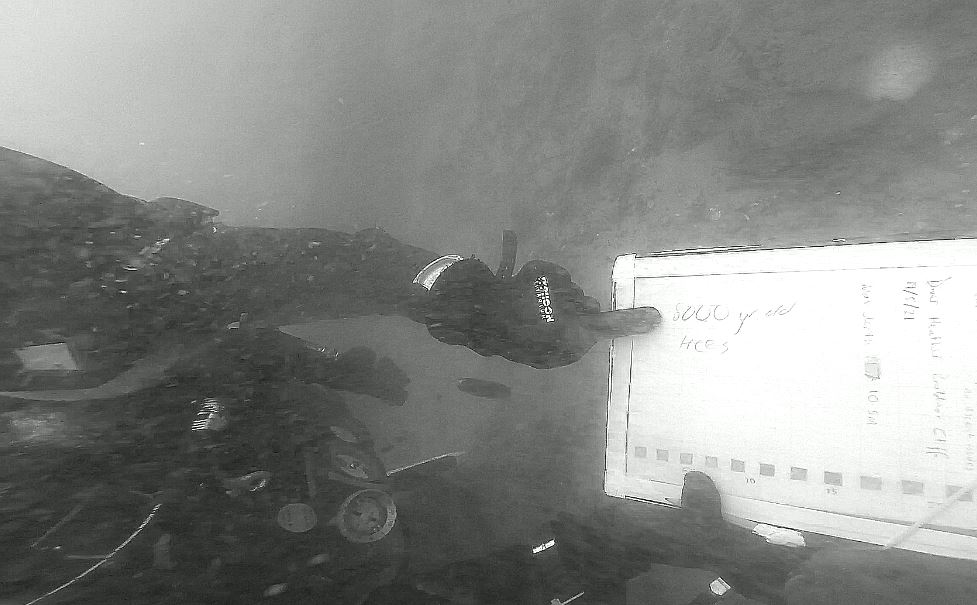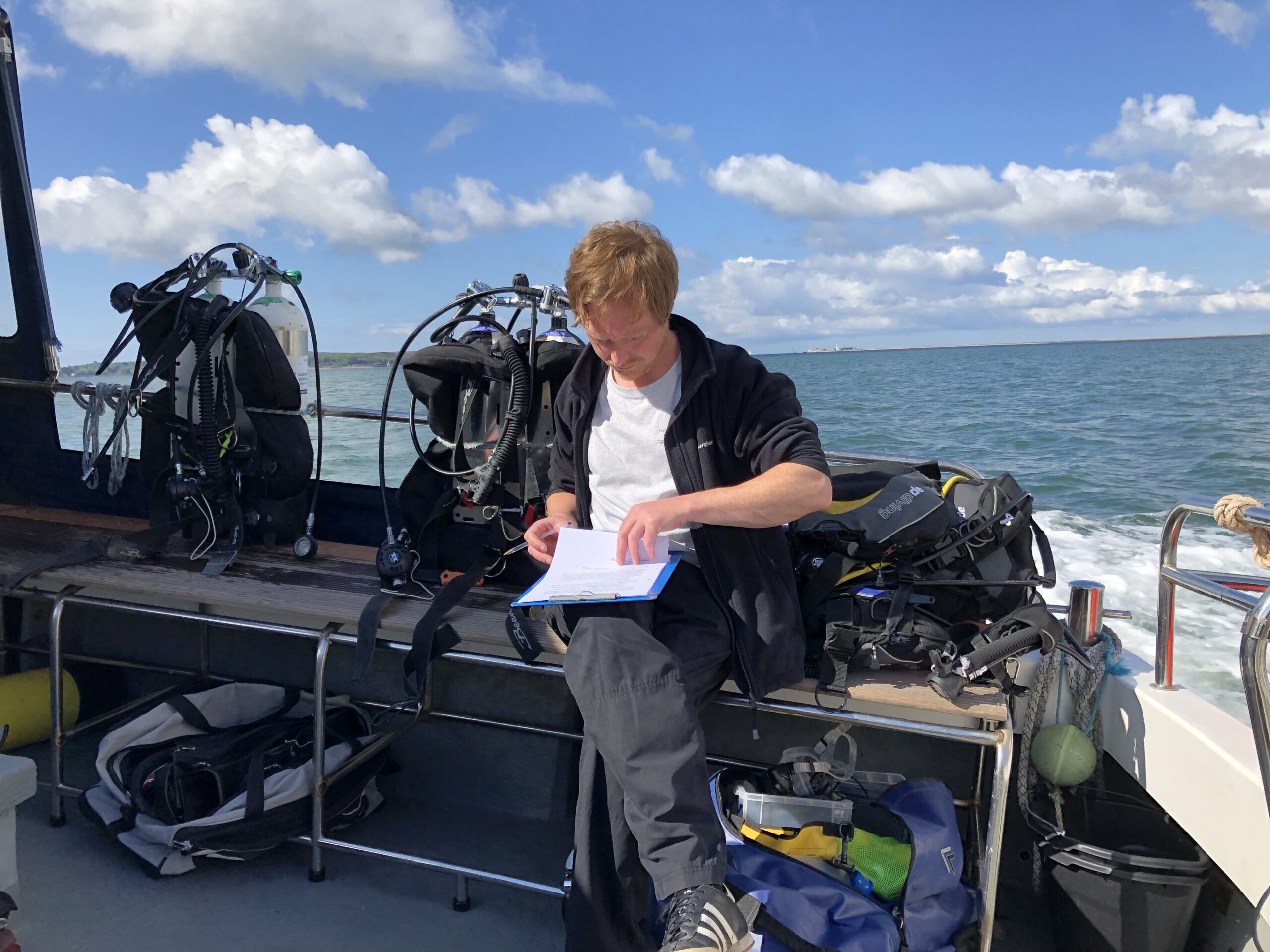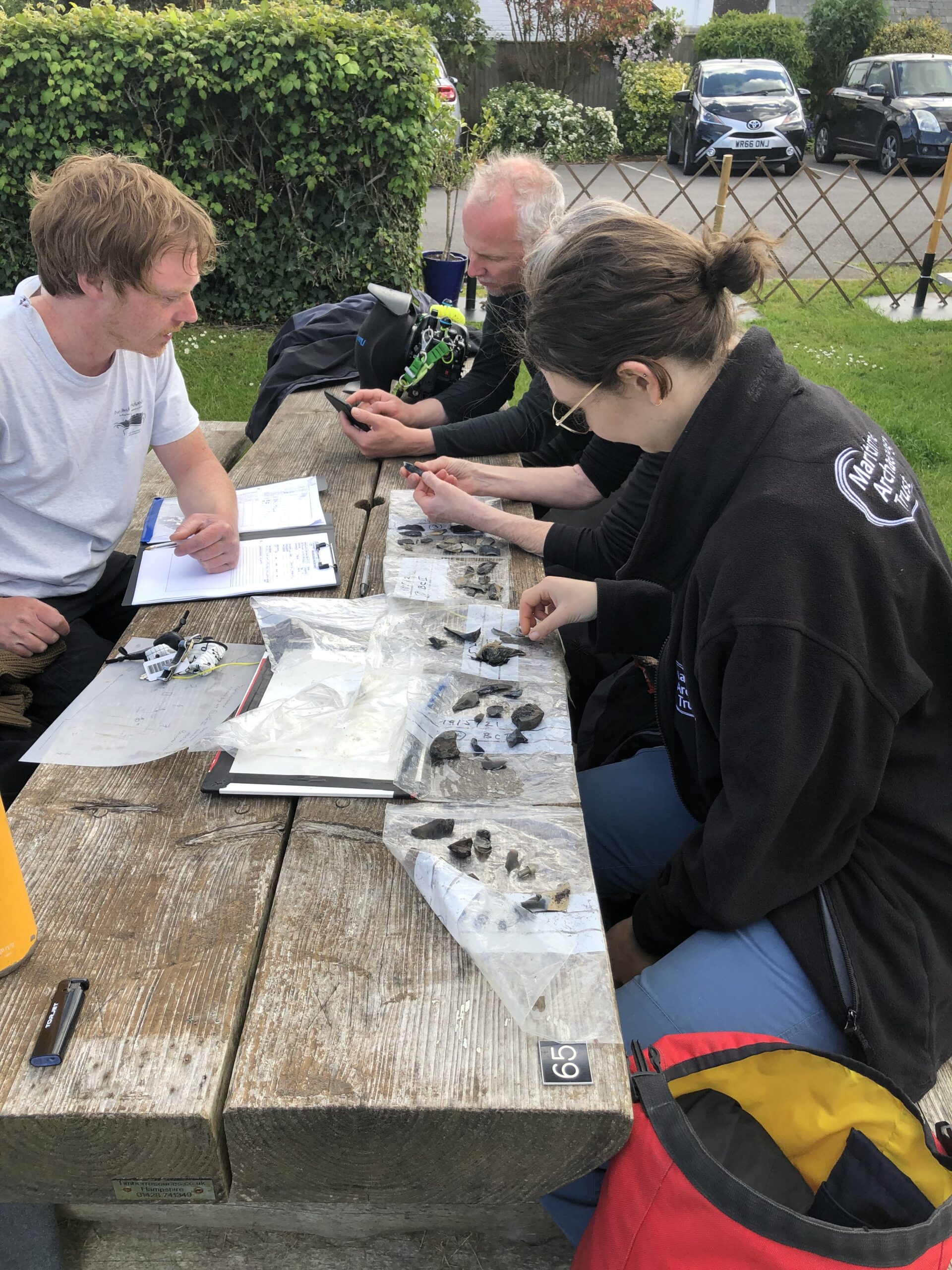The submerged Mesolithic landscapes and their evidence of human activity from 8,000 years ago, which lie at Bouldnor Cliff off the Isle of Wight, are highly significant archaeologically. The impact of experiencing them first-hand can rouse a range of emotions. MAT volunteer, Duncan Ross, who took his first dive on a prehistoric submerged landscape with us in 2021 was deeply moved by the site and its finds. Here, Duncan shares his personal story of his experience, including a thought-provoking poem.
Old Tree
By Duncan Ross
Hello old tree
As old as old can be
What have you known, what have you seen?
When sea was land, and land was sea,
What have you known what have you seen?
What secrets hold you in your roots,
What ancient rites, what ancient truths?
What pacts beneath your limbs were made?
Your boughs of shelter, boughs of shade.
So, tell us tree,
As old as old can be
What have you known, what have you seen?
When sea was land, and land was sea,
What have you known, what have you seen?
It is not often that a scuba diver is presented with the chance to visit a site of such uniqueness as that of Bouldnor Cliff. Thankfully, in 2021, after many false starts due to COVID-19, I finally got my chance.
Descending into the turbulent waters of the Solent, which lies between the Isle of Wight and the UK mainland, and observing the Bouldnor Cliff Mesolithic archaeological site, is a scuba diving experience like no other. One is suddenly face-to-face with a time capsule opening up in real-time, revealing the secrets of our history as far back as BC 6000.
The main area of interest lies at around 12 metres depth where a layer of peat, what was once a swamp, has entombed the ancient land below. It is on this land that our ancestors once worked, hunted and lived. Tree stumps, tree roots systems, flakes of stone (lithics), animal bones, and many other types of debris are emerging and, in some case, literally spilling out of the crumbling cliff.
To establish some order, the site has been divided into five sections: BCI through to BCV.
My first dive, accompanied by avocational archaeologist and ultra-competent diver Sara Hasan, took place at BCII. As it was our first ever dive at the site, it was something of an orientation dive, but we were also charged with a rather unexpected task: to collect and bag any small finds!
The visibility was good, which gave me and Sara a great chance to appreciate and explore the ancient landscape of our ancestors. We bagged-up anything that looked interesting, taking care to note its location on our site sketch map. At one point Sara pointed to a tree stump and wrote a simple message on her board. ‘8000 yr old trees!’. It was a moment of profound realisation.

Returning to the surface and climbing aboard Dave Wendes’ boat, Wight Spirit, we were greeted by MAT Director and project leader, Garry Momber. Then ensued something of a Pop Idol (or to be more accurate ‘Lithics Idol’) moment, where Garry sifted through the contents of our bags and, grinning, jettisoned overboard any objects that didn’t make the cut. What we were left with, after Garry’s stringent elimination process (honed by a twenty-year association with the Bouldnor Cliff site) were a few lithic flakes, a lithic tool – possibly a scraper – and a small bone (possibly from a chicken). As the bone was found loose on the seabed, it couldn’t be definitively related to a context or time period.


Day two saw us first diving at BCV in a strong current. Although physically taxing to swim against, the movement of water afforded us quite amazing visibility. It was here that I viewed the substantial tree stump that gave me the idea for the above poem, Old Tree. Utterly beguiled, I came up with the first few lines there and then.
Conger eels, crabs, fishes and lobsters now live in this underwater museum, oblivious to its importance; indeed, the site was first discovered by scuba divers Sophia Exelby and Roy Harold who witnessed a lobster spring cleaning its hidey-hole and throwing out Mesolithic-era flints.
As an amateur underwater archaeologist, at best, I can offer only limited skills as a volunteer scuba diver; although I am certainly improving. Over the two days, important archaeological work was going on all around us. This included thousands of photographs being taken of BCII in order to create an up-to-date photogrammetric mosaic of the section. The task is labour intensive and exhausting, further complicated by the need for accuracy and the requirement to remain at a constant depth. As the MAT tirelessly went about their professional tasks, they were always friendly, inclusive and cheerful. Sara and I were made to feel like we were part of the team.
As the last dive of the day approached, the weather turned completely on its head, and we were given a glimpse of the treacherous conditions the MAT staff and volunteers sometimes have to work in. Back at BCII, Sara and I were given a list of tasks to complete when we reached the site. We devised a plan, felt confident, and from a pitching and lurching boat, stepped into the Solent. Reaching the seabed at 12 metres, visibility was minimal, and our meticulously laid plans were compromised. For over fifteen minutes Sara and I took turns trying to find the enormous cliff face that was to the south; it wasn’t there, neither north, or west. As a last-ditch effort, Sara headed east. The BCII cliff face had no business being there, but it was. Weird. Frustratingly, by the time we established ourselves, my single 15 litre tank of air was running low. At the conclusion of the dive, the grand sum of our efforts amounted to us collecting a previously dropped tape measure. It was a tough dive, but useful for understanding the limits of what can be achieved when challenges are presented.
One of the MAT’s core aims is public outreach and engagement, and creating opportunities for people like myself to get involved with archaeology. The invitation to join MAT at the Bouldnor Cliff site was one of the best scuba diving experiences of my life. And I will be back!
Thank you to Duncan for sharing your heartfelt story of Bouldnor Cliff as a scuba diving volunteer. We are delighted you had such a great experience and look forward to you joining us again soon!
If you would like to find out more about Bouldnor Cliff, please click here.
To keep up to date with the latest news from MAT, please sign up for our monthly e-newsletter here.
